Types of Brake Shim Kits
A brake shim kit is a specialized component designed to reduce noise, vibration, and unwanted disturbances in vehicle brake systems. These small, flat pieces act as critical buffers between brake pads and calipers or rotors, ensuring smooth, quiet operation while extending the lifespan of your braking components.
Performance Benefit: Properly installed brake shims can significantly reduce brake noise by up to 80% and help distribute heat more evenly, potentially extending the life of your brake pads by 15-20%.
Metallic Brake Shim Kits
Made primarily from steel or copper, these durable shims excel in high-temperature environments, making them ideal for performance vehicles and heavy-duty applications.
Best for: Performance vehicles, trucks, and high-heat braking situations
Lifespan: 40,000-70,000 miles depending on driving conditions
Rubber/Polymer Brake Shim Kits
Constructed from specialized rubber or polymer materials, these shims offer superior noise reduction and vibration dampening properties for a quieter ride.
Best for: Passenger vehicles and applications where noise reduction is priority
Lifespan: 30,000-50,000 miles under normal driving conditions
Composite Brake Shim Kits
These advanced shims combine multiple materials (metal, rubber, and other composites) to achieve an optimal balance of durability, heat resistance, and noise reduction.
Best for: All-around use in various vehicle types and driving conditions
Lifespan: 35,000-60,000 miles depending on material composition
Coated Brake Shim Kits
Enhanced with specialized coatings like anti-friction or anti-corrosion treatments, these shims offer additional protection against wear and environmental factors.
Best for: Vehicles in high-humidity areas or regions with road salt exposure
Lifespan: 40,000-65,000 miles with enhanced corrosion resistance
| Shim Type | Noise Reduction | Heat Resistance | Durability | Best Application |
|---|---|---|---|---|
| Metallic | Moderate | Excellent | High | Performance & heavy-duty vehicles |
| Rubber/Polymer | Excellent | Fair | Moderate | Standard passenger vehicles |
| Composite | Very Good | Good | Good | Versatile for most applications |
| Coated | Good | Very Good | Very Good | Harsh environment conditions |
Specifications and Maintenance of Brake Shim Kits
Key Specifications
| Specification | Description | Importance |
|---|---|---|
| Material | Stainless steel, copper alloy, rubber, or composite materials | Determines heat resistance, durability, and noise dampening properties |
| Thickness | Typically ranges from 0.2mm to 1mm | Affects fitment, noise reduction capability, and heat dissipation |
| Coating | Anti-corrosion, anti-friction, or specialty dampening coatings | Enhances performance in specific conditions and extends lifespan |
| Compatibility | Vehicle-specific designs for proper fit with brake system | Critical for proper function and safety of braking system |
Essential Maintenance Guidelines
Regular Inspection
Inspect brake shims during routine brake maintenance (every 10,000-15,000 miles). Look for signs of wear, corrosion, warping, or damage. Replace immediately if any issues are detected.
Proper Cleaning
When servicing brakes, clean shims carefully using brake-specific cleaner. Remove all dust, debris, and brake fluid residue. Never use petroleum-based products on rubber or polymer shims.
Correct Installation
Always follow manufacturer guidelines for installation. Ensure proper alignment with brake pads and secure attachment. Incorrect installation can lead to noise, vibration, and premature failure.
Quality Replacement
Always replace with OEM-quality or better shims. Match material type to your driving conditions and vehicle requirements. Using inferior shims can compromise brake performance.
Important Safety Note: Always replace brake shims when installing new brake pads. Reusing old shims can compromise braking performance and safety.
How to Choose Brake Shim Kits
Selecting the right brake shim kit is crucial for ensuring optimal brake performance, minimizing noise, and maximizing the lifespan of your braking system. Consider these key factors when making your selection:
| Selection Factor | Considerations | Impact on Performance |
|---|---|---|
| Vehicle Compatibility | Match to specific vehicle make, model, and year | Ensures proper fit and function with existing brake components |
| Brake System Type | Different requirements for disc vs. drum brakes | Affects installation process and performance characteristics |
| Material Quality | Premium materials offer better performance and durability | Directly impacts lifespan, noise reduction, and heat management |
| Noise Reduction Capability | Look for specialized dampening features | Determines how effectively the shim reduces brake noise |
| Ease of Installation | Consider design features that simplify installation | Affects DIY feasibility and installation time |
| Brand Reputation | Research manufacturer track record and reviews | Indicates reliability and overall quality control |
| Price and Value | Balance cost against expected performance | Higher quality typically means better long-term value |
Pro Tip: For performance vehicles or those used in challenging conditions (mountainous terrain, frequent heavy loads), invest in premium metallic or composite shims with high heat resistance ratings to ensure consistent braking performance and longer service life.
DIY Installation of Brake Shim Kits
Installing brake shims yourself can save money and ensure they're properly fitted to your vehicle's specific needs. With the right tools and careful attention to detail, this is a manageable DIY project for most car owners.
Required Tools
- Jack and jack stands or a ramp
- Lug wrench
- Socket wrench set
- Torque wrench
- Brake cleaner spray
- Compressed air (optional but recommended)
- Wire or bungee cord (to hang caliper)
- Safety glasses and gloves
- New brake shim kit
Step-by-Step Installation Guide
Step 1: Vehicle Preparation
Park on level ground, engage parking brake, and chock wheels. Loosen wheel lug nuts while the vehicle is still on the ground. Carefully jack up the vehicle and secure with jack stands before fully removing lug nuts and wheel.
Step 2: Caliper Removal
Locate and remove bolts securing the brake caliper using the appropriate socket. Carefully slide the caliper off the rotor and suspend it using wire or a bungee cord. Never let it hang by the brake line!
Step 3: Remove Brake Pads
Remove the brake pads from the caliper bracket, noting their orientation. If present, remove the old shims, paying attention to their placement for reference during installation of new shims.
Step 4: Clean Components
Thoroughly clean the caliper, caliper bracket, and brake hardware using brake cleaner. Use compressed air if available to remove dust and debris. Inspect parts for damage or excessive wear that might require replacement.
Step 5: Install Shims
Apply the new shims to the brake pads according to the manufacturer's instructions. Ensure they're properly aligned and fully seated against the pad backing. Different pads may require shims in different positions.
Step 6: Reassemble
Reinstall the brake pads with attached shims into the caliper bracket. Slide the caliper back over the pads and rotor, then secure with the caliper bolts, tightening to the manufacturer's torque specifications.
Step 7: Complete Installation
Reinstall the wheel, hand-tightening lug nuts. Lower the vehicle to the ground, then use a torque wrench to tighten lug nuts in a star pattern to the recommended torque specification.
Step 8: Break-in Procedure
Pump the brake pedal several times until it becomes firm. Test the brakes at low speed in a safe area. Complete several gentle stops from low speeds to properly seat the pads and shims before normal driving.
Safety Warning: If you're uncomfortable performing any part of this brake work yourself, have it done by a professional mechanic. Properly functioning brakes are critical for vehicle safety.
Frequently Asked Questions
Yes, electric vehicles do require brake shims. While EVs utilize regenerative braking that reduces wear on traditional friction brakes, they still employ conventional disc brake systems as a backup and for complete stops. Brake shims perform the same vital functions in EVs as in conventional vehicles: reducing noise, minimizing vibration, and extending the life of brake components. Due to the reduced usage of friction brakes in EVs, proper shim installation becomes even more important to prevent noise issues during the less frequent but still essential use of the vehicle's mechanical braking system.
Yes, custom brake shim kits are available for specialized applications. Many manufacturers offer customization services for specific vehicle requirements, motorsport applications, or commercial fleets. When ordering custom brake shim kits, you can specify parameters such as:
- Material composition for specific temperature ranges or environmental conditions
- Custom thicknesses to address specific noise frequencies
- Specialized coatings for extreme conditions
- Unique shapes for non-standard brake pad designs
Custom orders typically require longer lead times and minimum order quantities, but can provide optimal solutions for unique braking requirements that off-the-shelf products cannot address.
Brake shims typically last between 30,000 to 70,000 miles, with their lifespan closely tied to the life of your brake pads. Several factors influence their durability:
| Factor | Impact on Shim Lifespan |
|---|---|
| Material Quality | Premium materials can extend lifespan by 15-20% |
| Driving Habits | Aggressive braking can reduce lifespan by up to 40% |
| Environmental Conditions | Extreme temperatures or road salt exposure can shorten lifespan by 25% |
| Vehicle Weight | Heavier vehicles place more stress on brake components |
| Terrain | Mountainous or hilly areas accelerate wear significantly |
Best practice is to always replace brake shims whenever you install new brake pads, even if the old shims appear to be in good condition. This ensures optimal noise reduction and braking performance through the entire life of your new pads.
Premium brake shims typically offer better performance and durability compared to standard or economy options. The additional cost often yields benefits including superior noise reduction, better heat management, and longer service life. For most daily drivers, mid-range quality shims provide a good balance of performance and value. However, premium shims are particularly worthwhile for performance vehicles, vehicles carrying heavy loads, or when driving in extreme conditions where braking system reliability is especially critical.





























































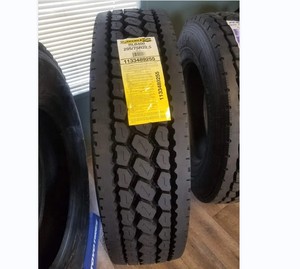
























































































































































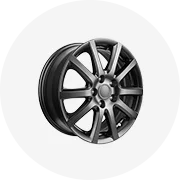
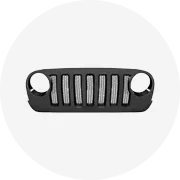

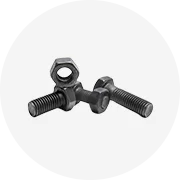
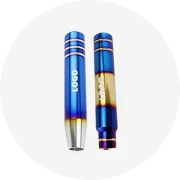
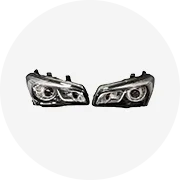
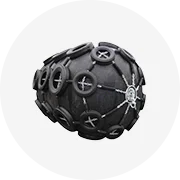
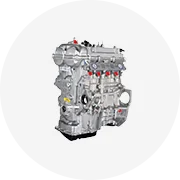
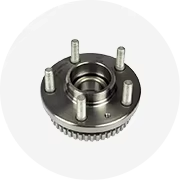
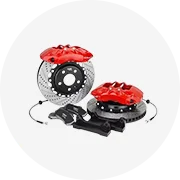
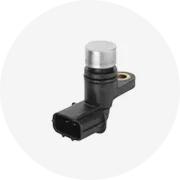


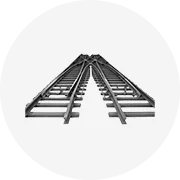
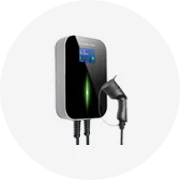
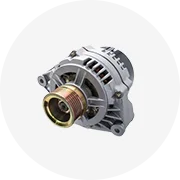






 浙公网安备 33010002000092号
浙公网安备 33010002000092号 浙B2-20120091-4
浙B2-20120091-4